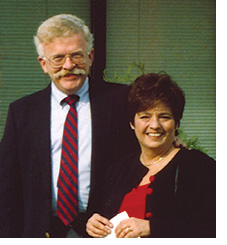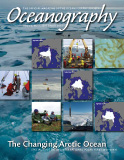Full Text
 A man who is full of life, spirit, energy, and fun is often said to have a twinkle in his eye. My friend and mentor, Tom Pyle, who passed away on May 28, 2011, had twinkles in abundance. He grew up in Brooklyn but loved the tropical tunes of Jimmy Buffett and the West Coast jams of the Grateful Dead—one of his greatest thrills was once meeting Jerry Garcia on an airplane. He was an Irishman who picked up plenty of Yiddish expressions and enjoyed “kibitzing.” He was a talented academic who became a tenured full professor but switched lanes to the more concrete satisfactions of scientific program management.
A man who is full of life, spirit, energy, and fun is often said to have a twinkle in his eye. My friend and mentor, Tom Pyle, who passed away on May 28, 2011, had twinkles in abundance. He grew up in Brooklyn but loved the tropical tunes of Jimmy Buffett and the West Coast jams of the Grateful Dead—one of his greatest thrills was once meeting Jerry Garcia on an airplane. He was an Irishman who picked up plenty of Yiddish expressions and enjoyed “kibitzing.” He was a talented academic who became a tenured full professor but switched lanes to the more concrete satisfactions of scientific program management.
I had the good fortune to see firsthand Tom’s unmatched skill as a program manager and boss. He brought me down to Washington in 1986 when he was the program director of the Ocean Drilling Program at Joint Oceanographic Institutions (now the Consortium for Ocean Leadership). I learned program management under his tutelage for eight years. Tom was smart and savvy, unassuming and kind, didn’t take no for an answer from subcontractors or funding agencies, and almost always found a way to accomplish his objectives, usually sooner rather than later. From time to time Tom certainly got his Irish up, as he would put it, but never to his staff. Instead, he would gently suggest some course corrections and teach us how to improve our work. As a mentor, Tom was always concerned about our futures, and offered sage advice on a multitude of topics, ranging from making sure we kept our fingers in research, to suggesting that young staffers who were much closer to college than retirement invest as much as possible in 401(k) accounts. (I thank Tom for that advice every time an account statement arrives in the mail.) Tom’s positive management style created an office environment where we worked hard, cared deeply about our mission, and always had time for a laugh or three, not to mention an occasional beverage. Tom gave the title “program manager” or “program director” a good name.
Tom’s tenure at JOI was only one chapter of a long and successful career. He had earned tenure as a professor at the University of South Florida, then served as a program manager at the Office of Naval Research in Bay St. Louis, Mississippi, and as the deputy director of the National Oceanic and Atmospheric Administration’s National Ocean Service. After his 10 years at JOI, Tom served for another 10 years at the National Science Foundation as the first head of the newly created Arctic Sciences Section in the Office of Polar Programs. In that capacity he developed a team, programs, and projects that positioned NSF to be a key component of the academic response once the scale and speed of Arctic environmental change became apparent. One of his greatest successes there was in adding a multibeam mapping capability to US Navy submarines as they traversed the Arctic Ocean—transforming our understanding of the bathymetry and its influence on ocean circulation. Sadly, toward the end of Tom’s years at NSF, his wife “Kip” (no one ever used her full name, Claudia) passed away. Tom never really recovered from that loss, and not long after Kip’s death he retired from NSF and moved to Denver to live near his two daughters.
Once Tom resettled in Colorado, most of us never heard from him again. Indeed, he kept such a low profile that many of his friends, colleagues, and admirers in the marine science community didn’t learn of his death for several months. But while Tom may be gone, he should not be forgotten. In the positions he held throughout the community, Tom touched and bettered peoples’ lives and careers. So let’s have at least one more toast to Tom Pyle before saying a final farewell to our friend. As a man who knew how to hoist a glass, Tom would have wanted it that way.
– Ellen S. Kappel, Editor

